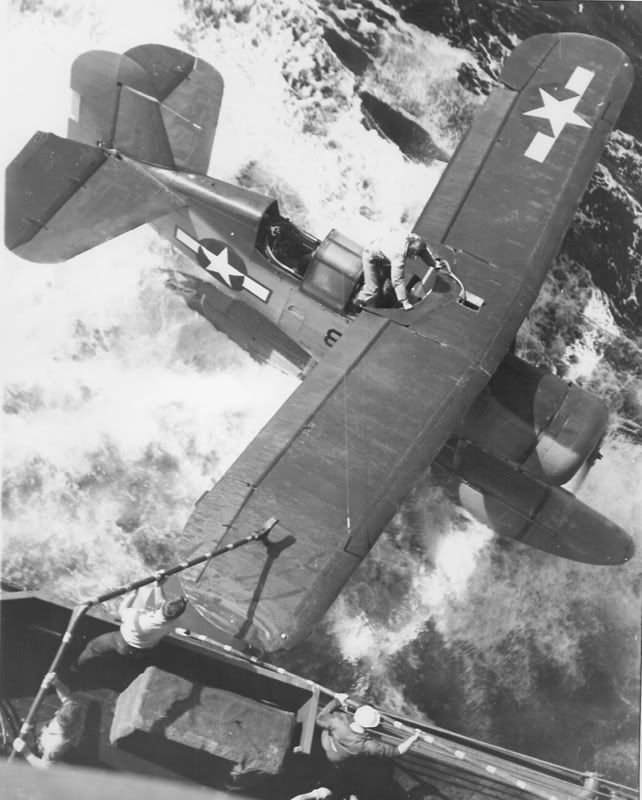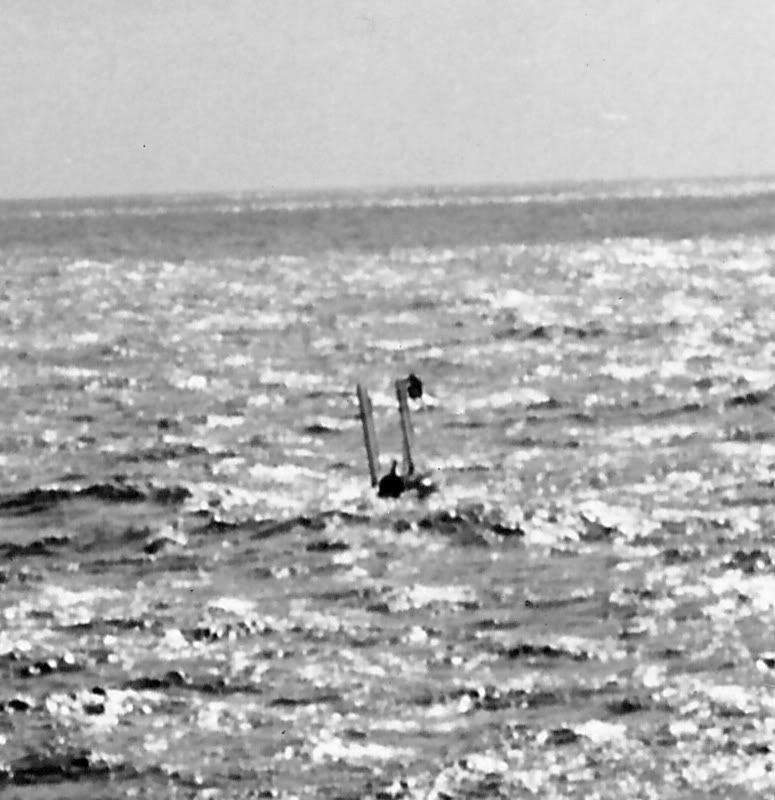INCREASE POWER
Sun Aug 17, 2008 5:27 pm
INCREASE POWER!!!!!! FLAP YOUR ARMS HARDER!!!!!! SAY A PRAYER
Sun Aug 17, 2008 8:22 pm
JDK wrote:That's interesting. I'd be very interested if you can find the reference.
I think it was an article in Air Enthusiast, or maybe even Flying Review, prior to about 1978. My copies are all in boxes deep in the basement, so it may take a while to confirm this.
I'm pretty sure about the date, as I was involved in performance testing on a small flying boat in 1978, as a very junior engineer. I remember discussing the article with the other engineers, and suggesting that we should be looking for 4 or 5 foot waves (the aircraft was stressed and tested for 2 foot waves). This produced a lot of laughter and rolling of eyes in the office that day.
Sun Aug 17, 2008 8:36 pm
Bill Walker wrote:JDK wrote:That's interesting. I'd be very interested if you can find the reference.
I think it was an article in Air Enthusiast, or maybe even Flying Review, prior to about 1978. My copies are all in boxes deep in the basement, so it may take a while to confirm this.
I'm pretty sure about the date, as I was involved in performance testing on a small flying boat in 1978, as a very junior engineer. I remember discussing the article with the other engineers, and suggesting that we should be looking for 4 or 5 foot waves (the aircraft was stressed and tested for 2 foot waves). This produced a lot of laughter and rolling of eyes in the office that day.
Hi Bill, I would be most interested - as you may know I wrote a book on the Walrus and Stranraer, and continue to research them. Interestingly, there was a postwar tank test of a model Walrus undertaken in the UK (papers in the National Archives - I have a copy somewhere)which concluded that the aircraft was very poor as a seaworthy machine. Again, postwar views that hardly gell with the wartime experience!
Like the story - I suppose you weren't meant to break the aircraft though.
Mon Aug 18, 2008 4:55 am
JDK wrote:...which concluded that the aircraft was very poor as a seaworthy machine.
From my personal experience most flying boats and all floatplanes are not very seaworthy. Survivable on the water - yes; comfortable, maneuverable, and practical - no. There were numerous examples in the early post war of flying boats being converted to straight boats (including at least one Walrus, in Newfoundland) and they were all dismal flops.
Mon Aug 18, 2008 6:27 am
Hi Bill,
Good point. However the RAE(?) report from Teddington(?) on the Walrus was implying that it wasn't very good at the job of surviving on the water - that may be true in a theoretical concept of 'seaworthy' for an aircraft, but the evidence of the rough water rescues successfully undertaken meant they were 'good enough'. What is an acceptable loss rate is a critical issue of course.
Dornier Do18 and 24, I think, were pretty unbeatable, but not in the same league as a pure boat.
Cheers
Good point. However the RAE(?) report from Teddington(?) on the Walrus was implying that it wasn't very good at the job of surviving on the water - that may be true in a theoretical concept of 'seaworthy' for an aircraft, but the evidence of the rough water rescues successfully undertaken meant they were 'good enough'. What is an acceptable loss rate is a critical issue of course.
Dornier Do18 and 24, I think, were pretty unbeatable, but not in the same league as a pure boat.
Cheers
SOC tough bird
Mon Aug 18, 2008 7:50 am
Here is a series of photos taken from the USS Tuscaloosa in Nov 1944. The SOC Seagull (with my friend piloting) was trying to get the SOC up onto the sled (which was malfunctioning) as well as having his crewman make the hoist hookup. The malfunctioning sled caused him to get get a TAD too close to the cruiser.....crunch. After bumping the side a few times, the float was torn off. At some point the engine was killed (for whatever reason), causing the second photo. Note both crewmen on the upper float desparately trying to keep their shoes dry while awaiting the launch.


Tough old bird, but not THAT tough! She's still just a kite.
Regards
Steve


Tough old bird, but not THAT tough! She's still just a kite.
Regards
Steve
Mon Aug 18, 2008 7:57 am
Great pics, NC!
Matches the account (in general - not the same occasion) in the website I referenced:
Commander Ralph "Kaiser" Wilhelm, USN (Ret.)
http://www.users.bigpond.com/pacificwar ... overy.html
Matches the account (in general - not the same occasion) in the website I referenced:
A disastrous Landing
Most seaplane recovery accidents fell into two categories:
1. The seaplane rolled over and sank due to the loss of a wing-tip float that had been severed by a cross swell when landing; or
2. The left wing of the seaplane needed to be replaced after the plane had run into the side of the ship due to engine torque on a starboard CAST recovery. For this reason, when the wind was high and the sea very rough, most ship's captains elected to recover their seaplanes by the port CAST recovery method.
On June 13, 1942, with the Battle of Midway behind us, the heavy cruiser USS Portland arrived in Pearl Harbor for thirty-three days.
On July 9, I had a little bad luck on my landing and a large cross swell knocked off my right wing tip float. The sea was very rough and although my radioman, Fred Dyer, who weighed over 200 pounds, immediately went out on the port wing to hold the right wing from dipping in the water, the seaplane soon rolled over. Dyer and I were left sitting on the bottom of the main float with the plane upside down below us! Portland sent us a message by blinker that they would return for us within one hour!
Later the ship returned and sent a motor whale boat to pick us up. I was wearing a new Bulova watch which I put in my mouth to keep dry when I swam the short distance from the seaplane to the boat. The ship attempted to salvage the seaplane, but without success. So the boatswain sank SOC-2, # 0406 by chopping holes in the main float. The cruiser San Francisco also lost a plane at the same time, so that made me feel a little better!
Commander Ralph "Kaiser" Wilhelm, USN (Ret.)
http://www.users.bigpond.com/pacificwar ... overy.html